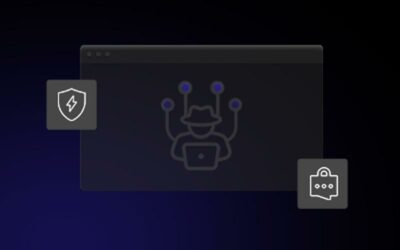We all use the internet, and nothing is going to change that. But can we all use it safely?
Avoiding sketchy websites used to be the key to protecting yourself online, and for the most part, it was rather easy to do. But now, avoiding malicious websites is only part of the gig.
You can be infected with viruses, spyware, trojans, and other ruthless malware simply by opening up the wrong email, clicking on the wrong link, or landing on the wrong website (whether it’s a sketchy website or not). However, this doesn’t mean safeguarding your online world is a lost cause.
Protecting yourself online involves some work on your end, as well as a high degree of good ol’ fashioned suspicion. Here are six basic steps you can take to better protect yourself online.
USE STRONG PASSWORDS
Craft your passwords to be strong, and you’ll easily sidestep a vast majority of online threats. In the event of a serious data breach, the stronger your password, the less likely it is that your account information will leak out.
But what does a strong password look like? There are a few methods to creating secure passwords you can actually remember. Learn how in our blog post here.
BE SUSPICIOUS OF EMAILS
When it comes to emails, always be skeptical of who messages come from and what they’re asking you to do. Malicious emails can be extremely targeted, making them very believable.
It’s important never to click on links, download files, or follow through with a request until you validate the email and its contents.
[Learn more about spotting and avoiding phishing emails]
SHOP ONLY ON TRUSTWORTHY WEBSITES
Sometimes it might be tempting to purchase products on obscure websites – maybe the product you’re looking for is hard to find, or it’s considerably cheaper on other, less popular sites.
But is it worth losing your financial information to a thief or infecting your computer with a virus because you found a t-shirt two dollars cheaper on an obscure website?
INSTALL A GOOD ANTIVIRUS
There’s no reason you shouldn’t have a good antivirus installed on your devices. You can purchase software for a relatively decent price and install it on all of your connected devices.
Even though operating systems and browsers come with their own security, it’s important to layer on the security as much as possible.
LOCK YOUR DEVICE
You should always have your connected devices locked – PC, laptop, tablet, phone, and anything else you may have. There should be a password to access your device and then additional passwords to access applications and online accounts.
KNOW THE SETTINGS ON YOUR BROWSER
Your browser’s settings can help you protect yourself online if you know what to look for. You can block pop-ups, secure your privacy, turn off search history, and ask the browser to notify you of malicious sites.
To learn more, do an online search of your specific browser, and you should be able to find a comprehensive how-to list. Here’s a useful list of security settings for Chrome, Firefox, and Internet Explorer.




